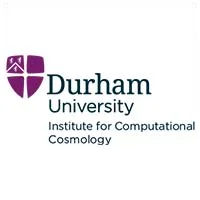Two Spectra T950 Tape Libraries with LTO-8 Drives and Media Store Irreplaceable HPC-Based Research in Astronomy and Cosmology at the Durham Facilities
BRACKNELL, U.K. – 7 July /2021 – Spectra Logic, a leader in data storage and data management solutions, today announced that the DiRAC Memory Intensive Service based at Durham University’s Institute for Computational Cosmology in the UK has deployed a Spectra® T950 Tape Library with LTO tape drives for the long-term storage of multiple petabytes of cosmological data, representing simulations of galaxy formation and evolution. In addition, Durham recently deployed a second Spectra T950 Tape Library with LTO drives and media to support DiRAC-3, an initiative funded by UK Research and Innovation to upgrade computing power at all four DiRAC sites. The new HPC systems will be three to five times more powerful than the existing DiRAC machines. Click here to read more about the Durham case study.
The DiRAC Memory Intensive Service is an HPC facility hosted by Durham University. DiRAC (Distributed Research Utilizing Advanced Computing) is the integrated supercomputing facility for theoretical modelling and HPC-based research in particle physics, astronomy and cosmology, and nuclear physics. Researchers across the UK leverage the Memory Intensive Service to map initial star conditions and tune them to achieve a match over time with what is presently seen in the sky using telescopes.
These simulations require considerable volumes of memory and RAM, and the facilities at Durham University provide approximately 230TB of RAM spread throughout their HPC cluster. Research data is stored on disk, currently amassing approximately 10PB in primary storage across four generations of GPFS and Lustre file systems. Over time, DiRAC expects to see a 10-fold increase in processing and a corresponding increase in data creation and storage requirements. The team estimates that they will generate upwards of 20PB of data to store by 2022. Furthermore, researchers may revisit the data for up to 15 years, meaning the data must remain uncorrupted for future use.
Originally, the team at DiRAC sought a solution that would archive in an open file format and handle incremental and full backups, enabling them to implement a comprehensive data protection strategy that would ensure long-term storage. After exploring other options, Durham University chose a Spectra T950 Tape Library with LTO tape drives. Satisfied with the first Spectra T950 Tape Library installation, Durham recently deployed a second Spectra T950 Tape Library with LTO-8 drives and media to support DiRAC-3. With both Spectra tape libraries, researchers at Durham have the security of knowing that their data is backed up, available, and protected for long-term use.
“Collaboration is key at DiRAC sites and we expect it from our technology providers,” said Dr. Alastair Basden, technical lead for the DiRAC Memory Intensive Service, Durham University. “We have seen Spectra step up to the mark more than once since the deployment of our Spectra T950 Tape Libraries. We’ve received very good support and advice from the Spectra team at every step of the way.”




